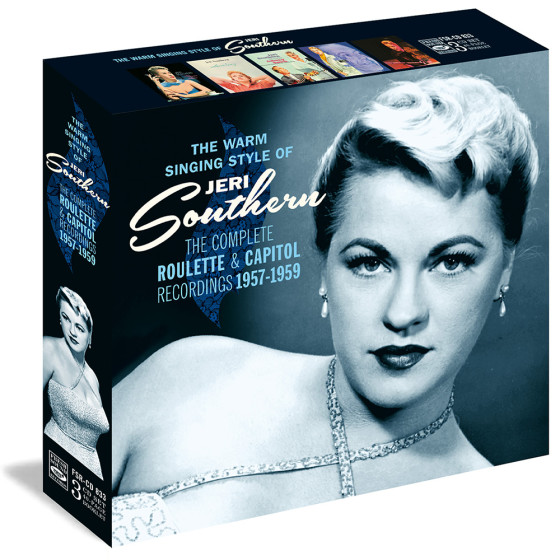No products
Jane Harvey & Anne Phillips
Leave it to Jane! + Born to be Blue (2 LP on 1 CD)
Best Voices Time Forgot
Personnel:
Jane Harvey, Anne Phillips (vcl), Jack Kane, Kermit Leslie (arr, cond), Doc Severinsen (tp), Walt Levinsky (as), Bernie Leighton (p), Barry Galbraith, Mundell Lowe (g), George Duvivier, Milt Hinton (b), Osie Johnson (d)
Reference: FSR V107 CD
Bar code: 8427328641074
The Best Voices Time Forgot
Collectible Albums by Top Female Vocalists
· Collector's Edition
· 2 Original LPs on 1 CD
· Original Cover Art, Liner Notes
· Complete Personnel Details
· Stereo Recordings
· Newly Remastered in 24-Bit
Leave it to Jane!
Jane Harvey is a singer who carries a torch with a low flame that seems to burn all the more intensely because of her control. In this set, she displays her impeccable musical taste and clear tone by singing with an emotional and authoritative style. These songs gain in depth from the slightly rough, worn quality of her husky voice.
Born to be Blue
There is no question but that Anne Phillips has her own individuality. Sort of lazy and dreamy but with a purring quality which covers hidden, catlike strength and enticement. Exquisite, tender, richly arranged, “Born To Be Blue” will give you a sky-blue glow… Sort of a smoky sky-blue.
Tracklist
Album details
Sources:Tracks #1-11, from the LP “Leave It To Jane!” (Dot DLP 3185)
Tracks #12-23, from the LP “Born To Be Blue” (Roulette SR-25090)
Personnel on “Leave It To Jane!”:
Jane Harvey, vocals, accompanied by
Orchestra Conducted by Jack Kane
Recorded in Los Angeles, 1959
Personnel on “Born To Be Blue”:
Anne Phillips, vocals, accompanied by
Orchestra Arranged and Conducted by Kermit Leslie, featuring Doc Severinsen, trumpet; Walt Levinsky, alto sax; Bernie Leighton, piano; Barry Galbraith or Mundell Lowe, guitar; George Duvivier or Milt Hinton, bass; Osie Johnson, drums; plus string section.
Recorded in New York City, 1959
Original recordings produced by Bob Thiele (Dot) and Joe Reisman (Roulette)
This CD compilation produced by Jordi Pujol
Stereo • 24-Bit Digitally Remastered
Press reviews
Leave it to Jane!
"Jane Harvey's lone Dot LP is an entertaining effort galvanized by the singer's sensational pipes. While Harvey's roots are in the big bands, Leave It to Jane boasts a refreshingly updated sound inspired by modern jazz. The credits don't list an arranger, but the album's crisp, energetic approach is essential to its appeal. The problem lies in the material -- Harvey does her best with lightweight fare like "Telephonez Moi" and "Trav'lin," but her bold, brassy vocals aren't quite enough to carry the day."
Jason Ankeny -All Music Guide
_________________________________________________________________________________________
Born to be Blue
"[...] a positively gorgeous and sublime female vocal album with a top jazz rhythm section, trumpet, sax and strings. She also provides a glimpse of what being a top New York demo singer was like in the 1950s and '60, with songwriters competing feverishly for publishers and pop-rock artists.
Miss Anne Phillips talking: We recorded the album in 1959 over three, three-hour sessions at Bell Sound Studio—four tunes on each session. I sang with the world’s greatest musicians: Doc Severinsen on trumpet, Kermit’s brother Walt Levinsky on alto, 10 strings and a magnificent rhythm section: Bernie Leighton on piano, George Duvivier or Milt Hinton on bass, Osie Johnson on drums, and Barry Galbraith or Mundell Lowe on guitar.
I was in the same room with the musicians, surrounded only by a gobo [an acoustic screen]. We recorded onto two-track stereo—no editing, no fixing in the mix, no Pro-Tools, no pitch correction, no nothing. It was all live.
The first tune on the first session was For Heaven’s Sake. It started with me alone singing 'For heavens sake…' followed by those luscious strings. What they heard next in the booth from me after was hilarious—a croaking second line '… let's fall in love…' I could hardly get a sound out I was so excited. After I got over the initial thrilling shock, we did another take and the session went smoothly.
At the end of the song's first run-through, a beautiful thing happened. Every musician in the room put his instrument down and applauded—not for me but for Kermit. Some years later I learned that Kermit had been 'ghosting' for many arrangers for some time. I think this was his first session with his name on the work, and the musicians were overjoyed for him.
The album was pressed but not yet packaged when Joe discovered that someone else had recorded Lonelyville as a title song. So he had Lonleyville flipped to the B-side of the single and Born to Be Blue became the A-side. I was much happier with that. Many years later I met Bob Wells, the song's lyricist who composed extensively with Mel Tormé. He told me that my recording of the song was his favorite. That gave me chills.
Born to Be Blue received great reviews when it came out later that year. This was from Billboard: 'Miss Phillips has a willowy, wistful sound that is used to listenable effect on an attractive group of tunes. Sparked by Kermit Levinsky’s fine arrangements she registers well on the album title tune, You Don’t Know What Love Is, There Will Never Be Another You, etc. Her phrasing is good and her approach to a song doesn’t invite comparison. A talent to watch.'"
Marc Myers -JazzWax

































